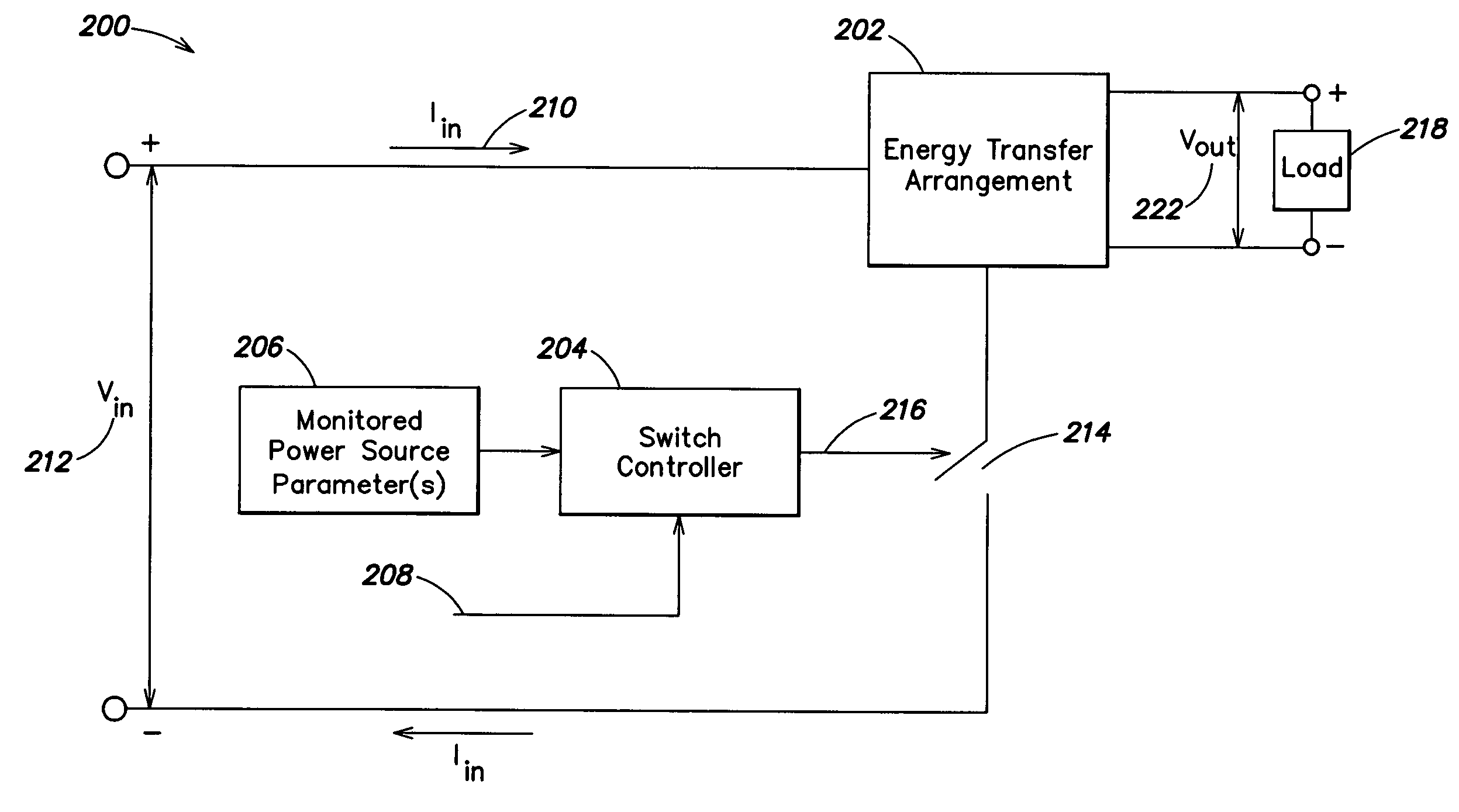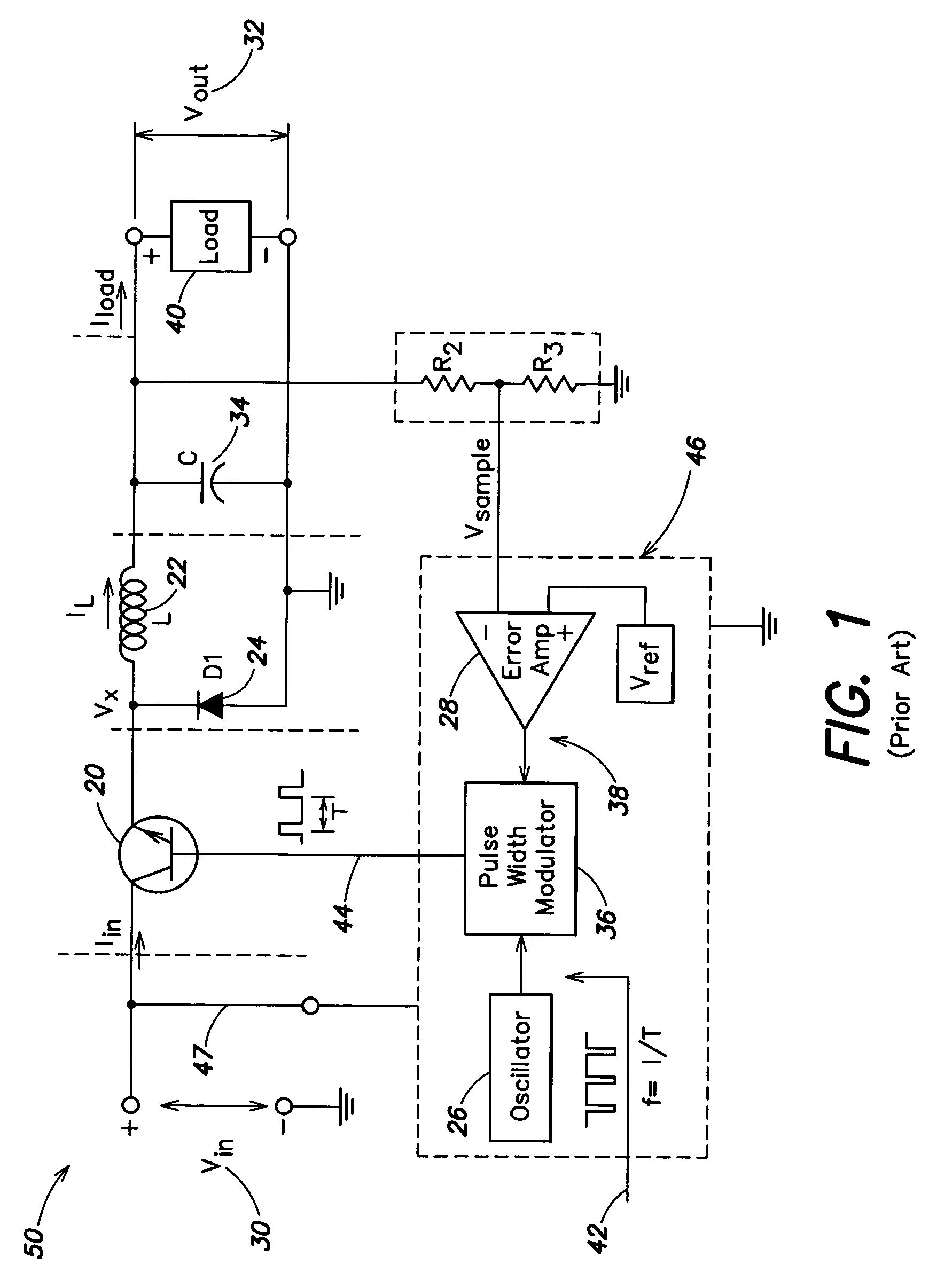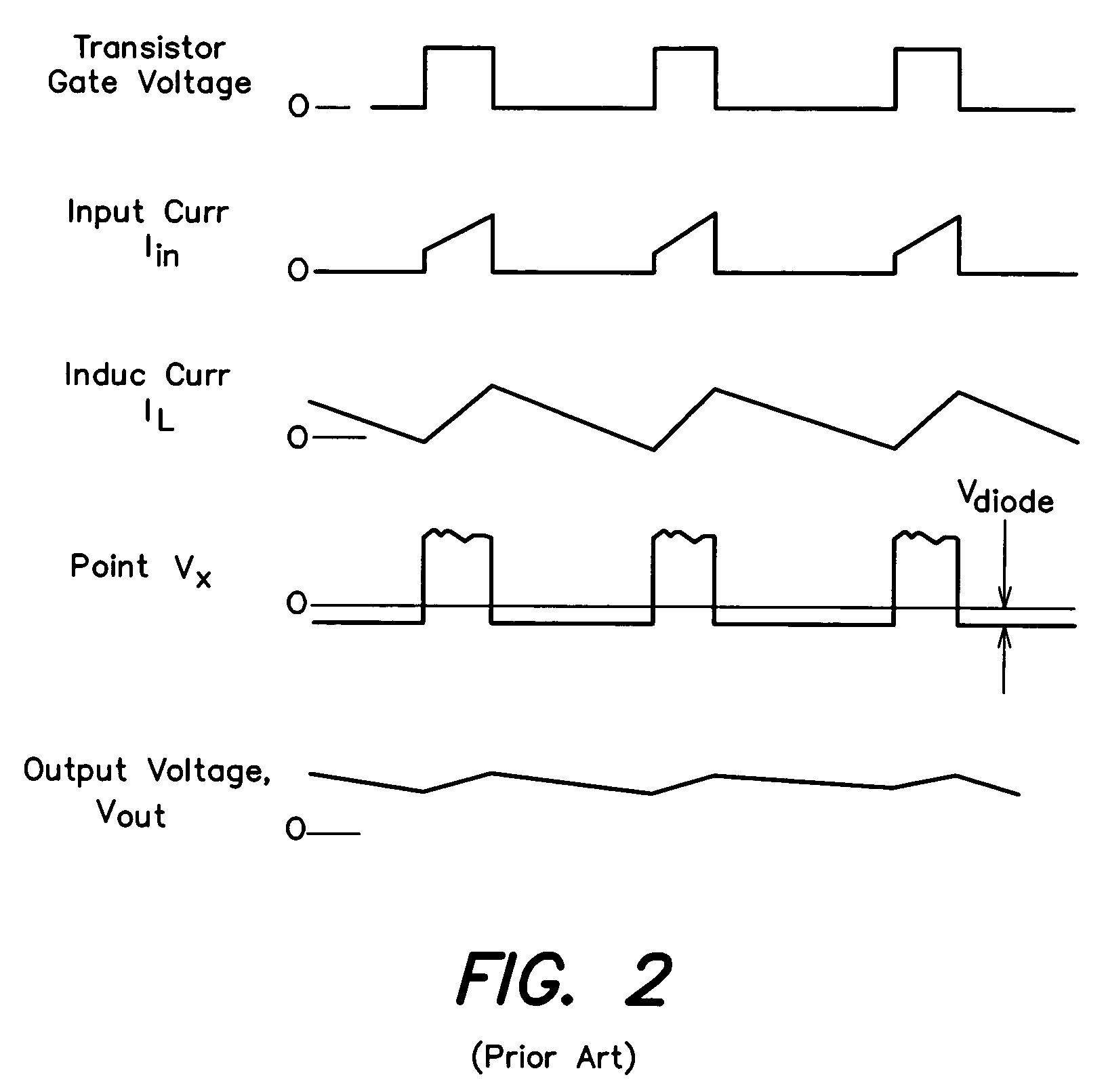LED power control methods and apparatus
a technology of power control and control method, applied in the direction of electric variable regulation, process and machine control, instruments, etc., can solve the problems of feedback control loop, unpredictable amount of energy, and potential inductance energy build-up, so as to improve overall power efficiency, and reduce the effect of functional redundancy of components
- Summary
- Abstract
- Description
- Claims
- Application Information
AI Technical Summary
Benefits of technology
Problems solved by technology
Method used
Image
Examples
Embodiment Construction
[0127]Applicants have recognized and appreciated that for some power supply applications and some types of loads, commercially available conventional switching power supplies based on DC-DC converters may not be best configured to facilitate a flexible and / or efficient provision of power to a load. For example, although the power conversion efficiency of many conventional switching supplies is on the order of approximately 80% (from A.C. line voltage to a regulated DC voltage output), particular configurations and / or control requirements of different loads may significantly reduce the overall power conversion efficiency of a system that includes a DC-DC converter and a load, wherein the load itself may include various control circuitry.
[0128]Additionally, Applicants have recognized and appreciated that for some applications and for some types of loads, the functions of providing appropriate power to the load and controlling some functionality associated with the load may be signific...
PUM
 Login to View More
Login to View More Abstract
Description
Claims
Application Information
 Login to View More
Login to View More - R&D
- Intellectual Property
- Life Sciences
- Materials
- Tech Scout
- Unparalleled Data Quality
- Higher Quality Content
- 60% Fewer Hallucinations
Browse by: Latest US Patents, China's latest patents, Technical Efficacy Thesaurus, Application Domain, Technology Topic, Popular Technical Reports.
© 2025 PatSnap. All rights reserved.Legal|Privacy policy|Modern Slavery Act Transparency Statement|Sitemap|About US| Contact US: help@patsnap.com



